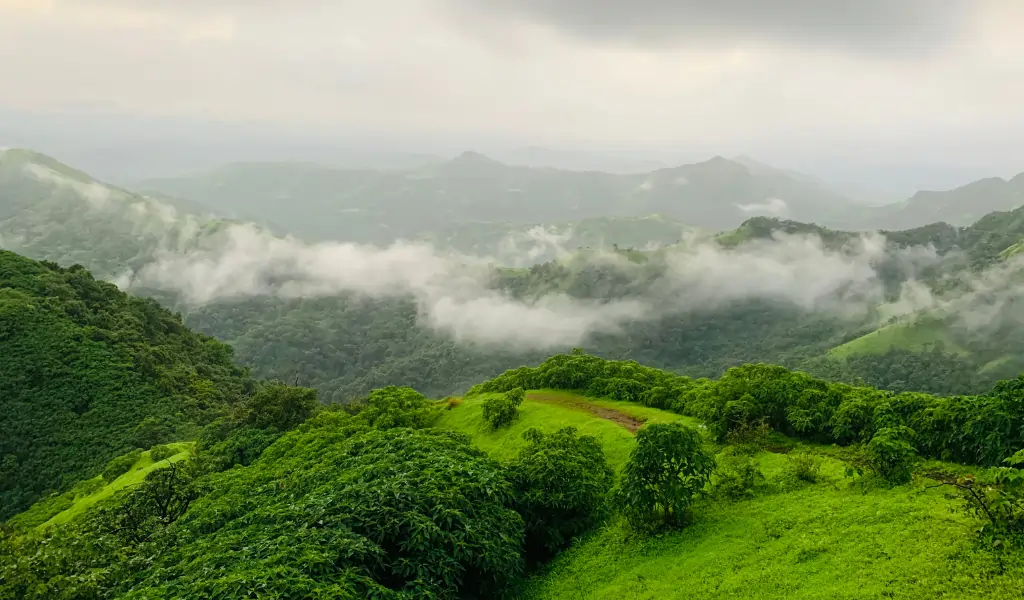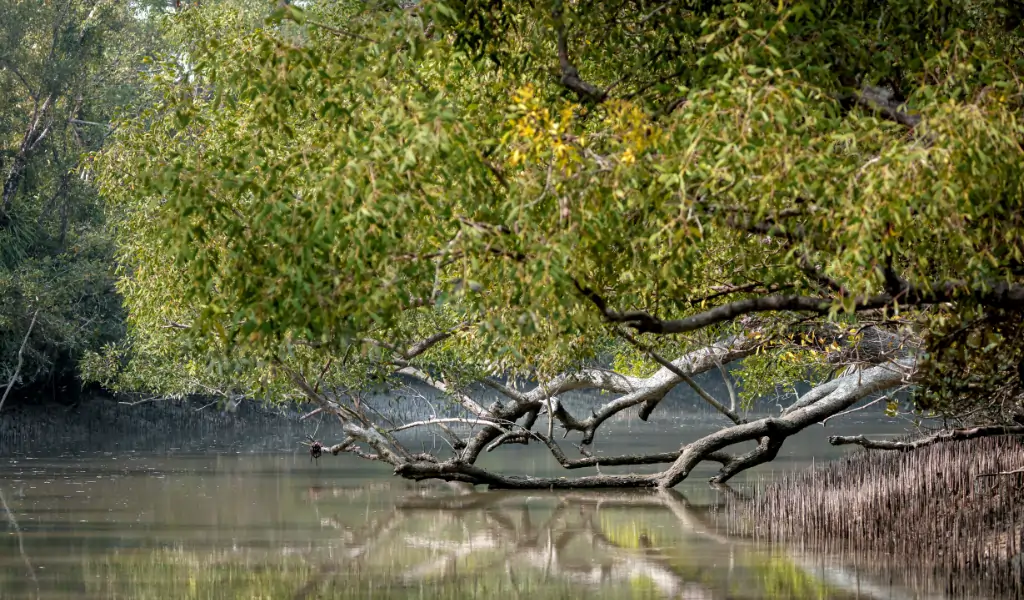Trees are more than just the most visible feature of a forest, they are the foundation of ecosystems, providers of critical services to wildlife and humans alike, and key allies in the global fight against climate change. Whether in a tropical rainforest or a dry deciduous grove, the presence of trees defines the very essence of a forest.
Trees across India hosts a rich variety of forest types, trees play unique and irreplaceable roles. From regulating the climate to supporting entire networks of biodiversity, their ecological significance cannot be overstated.
Trees and Climate Regulation
One of the most crucial environmental roles trees perform is sequestering atmospheric carbon dioxide, a major greenhouse gas responsible for global warming. Through photosynthesis, trees absorb carbon dioxide and release oxygen. This not only purifies the air but also helps mitigate the effects of climate change by storing carbon in their biomass.
When forests are cleared or burned, this stored carbon is released, accelerating global warming. Mature and diverse forests like those in the Western Ghats or Northeast India act as massive carbon sinks. Replacing them with monoculture plantations cannot replicate the same ecological benefits, as these lack the complexity and carbon-holding capacity of native forests.
Ecological Role of Trees in Forest Ecosystems
A forest without trees is a contradiction. Trees are the dominant life form in most forests and shape the structure, function, and diversity of these ecosystems. They provide:
- Nesting and roosting sites for birds and bats
- Shade and protection for smaller plants and soil organisms
- Fruits, seeds, leaves, and nectar for a wide variety of herbivores and pollinators
- Perches and hunting grounds for predatory animals
- Microhabitats for fungi, insects, epiphytes, and mosses
A single tree often supports hundreds of species. For instance, fig trees are considered keystone species in many Indian forests, feeding dozens of bird and mammal species during lean months.
Soil Conservation and Water Regulation: Trees as Natural Engineers
The roots of trees play a critical role in preventing soil erosion. By anchoring the soil firmly in place, they reduce the impact of wind and water runoff, particularly on slopes, riverbanks, and degraded landscapes. Without tree roots, soil becomes loose and highly vulnerable to being washed away during heavy rains or blown away in arid regions.
Moreover, tree roots act like natural sponges—they absorb rainwater and gradually release it into the surrounding soil and groundwater systems. This slow release not only sustains underground aquifers but also ensures a steady supply of water for springs, streams, and rivers during dry periods. In forested catchments, this mechanism is vital for the maintenance of perennial rivers and helps mitigate both floods and droughts.
The presence of trees in a landscape thus directly supports long-term water security for humans, wildlife, and agriculture, making them indispensable for ecosystem stability and resilience.
Legal Protection and Conservation Efforts
In India, forests and trees enjoy significant legal protection. When a protected area such as a national park, wildlife sanctuary, or conservation reserve is declared, it encompasses the entire ecosystem—including every tree, shrub, and blade of grass.
Cutting trees inside these areas is prohibited under the Wildlife (Protection) Act, 1972. Even in cities, tree removal is regulated, and permission is required from local authorities or forest departments.
Certain species are protected under Schedule VI of the Act, which lists plant species that are not allowed to be cultivated, harvested, or traded without government authorization. Notable among these are Red Sandalwood (Pterocarpus santalinus) and agarwood (Aquilaria malaccensis).
Forest Types of India and the Role of Trees in Each
India hosts a wide range of forest ecosystems, and trees play distinct ecological roles in each. Forests in India are classified in 16 types in which some major categories are given here:
1. Tropical Rainforests (e.g., Western Ghats, Andaman and Nicobar Islands)
These forests are known for dense canopy cover and layered vegetation. Native trees support specialized species like canopy-dwelling frogs, hornbills, and orchid bees. Loss of tree diversity here can lead to the extinction of dependent species.
2. Deciduous Forests (e.g., Central India, Satpura Range)
Sal, teak, mahua, and tendu trees dominate these forests. They support herbivores such as deer, gaur, and wild boar, which in turn sustain carnivores like tigers and leopards. Seasonal leaf-shedding helps conserve water and allows light to reach ground vegetation.
3. Dry and Thorn Forests (e.g., Rajasthan, parts of Gujarat)
Trees like Acacia and Prosopis are adapted to extreme drought. They provide crucial shade and shelter in arid environments, supporting pollinators, small mammals, and birds.
4. Coniferous and Montane Forests (e.g., Himalayas)
Deodar, pine, fir, and spruce trees dominate higher elevations. These trees stabilize steep slopes, support unique mountain wildlife such as the red panda, and regulate glacial runoff into rivers.
5. Mangrove Forests (e.g., Sundarbans)
Mangrove trees such as Avicennia and Rhizophora are adapted to brackish water and tidal flooding. Their aerial roots help prevent soil erosion and act as a natural defense against cyclones and tsunamis. They provide breeding grounds for fish and support species like the Bengal tiger and fishing cat.
Trees Across India and Their Biodiversity
Tree diversity is essential for maintaining the overall health of an ecosystem. Many birds, mammals, insects, and amphibians have co-evolved with specific tree species. For example:
- Certain species of hornbills only nest in old-growth trees with large cavities.
- Some frogs and arboreal reptiles depend entirely on specific tree bark or leaf structures.
- Bees often nest in tree hollows and depend on floral resources from a variety of native trees.
The disappearance of native trees can break these ecological relationships, resulting in cascading effects across the food web. Additionally, trees play a crucial role in supporting pollination, which is vital for the production of many of our food crops.
The Dangers of Monoculture and Commercial Plantations
While tree plantation drives are often hailed as environmental solutions, not all plantations are equal. Monocultures, where a single species such as eucalyptus or pine is grown over large areas do not offer the same ecological value as mixed native forests.
Monoculture plantations lack diversity, deplete soil nutrients, and provide limited food and shelter to wildlife. They are particularly vulnerable to pests and climate stress. In contrast, forests with native tree species are resilient, self-sustaining, and rich in biodiversity.
Restoration, Reforestation, and Urban Forestry
Efforts across India are now focusing on restoring degraded lands with native tree species. In central India and parts of the Himalayas, abandoned agricultural lands and relocated village sites are being rewilded, allowing natural succession to restore ecosystems.
In urban areas, the importance of trees is increasingly recognized. From reducing the urban heat island effect to improving mental health and air quality, urban trees offer critical ecosystem services. Tree preservation laws, heritage tree registers, and community planting drives are now part of many municipal strategies.
Conclusion
Trees are the foundation of every forest ecosystem. They absorb carbon, purify the air, provide shelter and food, and support complex relationships that sustain biodiversity. In every forest type, from rainforests to dry forests, trees perform roles that cannot be replicated by any technology or artificial solution.
Protecting and restoring native tree species is not just an environmental goal, it is a necessity for ecological, economic, and human well-being. As we face the realities of climate change, biodiversity loss, and water stress, trees remain our oldest and most reliable allies.










